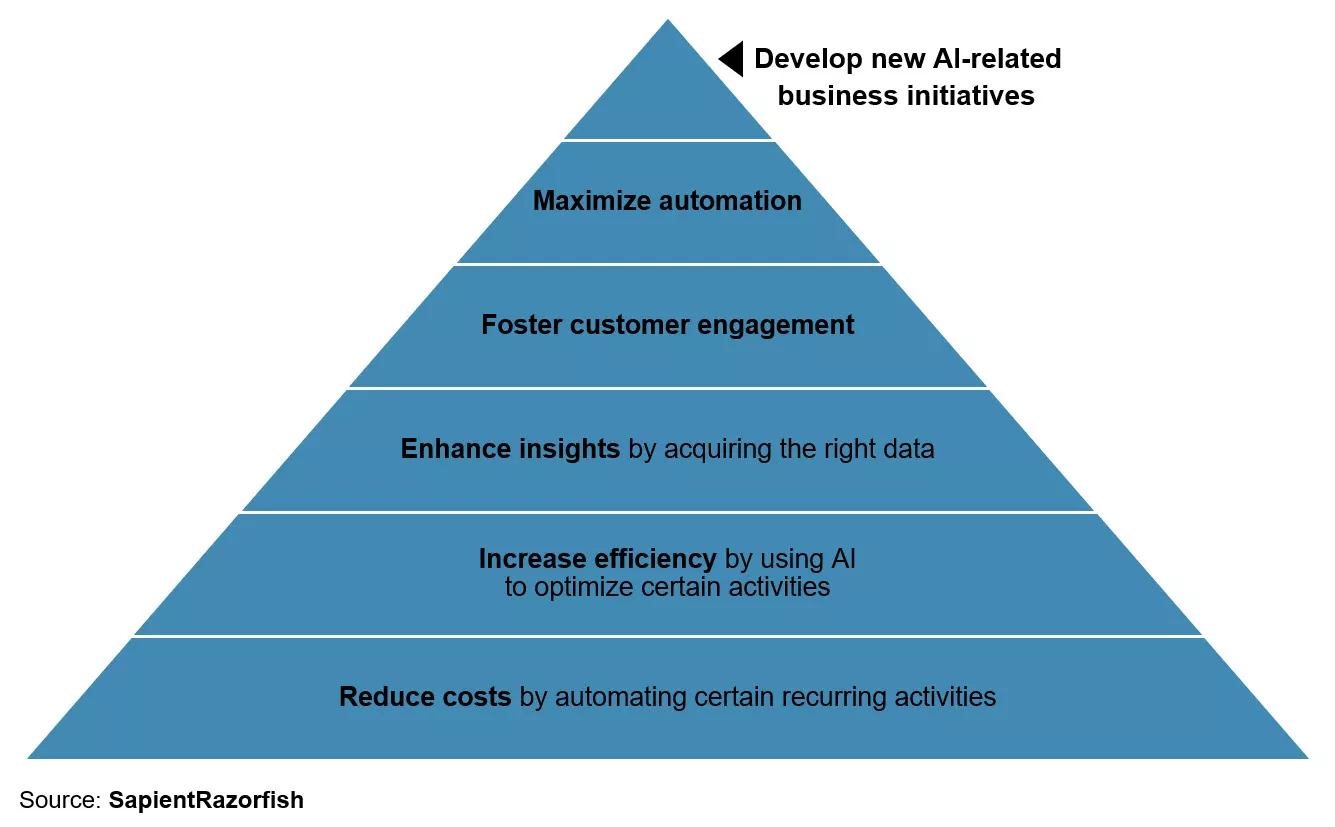The Race to Adopt AI: Are You on the Starting Line?
While Montréal is becoming a globally recognized centre of excellence in artificial intelligence (AI), a 2018 NOVIPRO/Léger survey shows that large and medium-sized businesses in the province are slow to get into the starting blocks and invest in AI. In fact, only 23% of Québec businesses are thinking about investing in this area. There are many reasons behind why many companies are lagging behind: a lack of understanding of the sector and its real applications, difficulty in visualizing how AI could be of real use, a lack of specialized resources and the perceived complexity of AI.
Several McKinsey studies show that, as a general rule, large technology companies are the first to embrace AI. Yet, companies of all sizes and in a variety of industries could reap the benefits of this technology. They only need to know where to start.
Is AI useful for my business?
It may be difficult to imagine how technological progress could apply to a company’s daily operations.
Given that AI is developing fast and that current technology can already be used as a powerful tool to improve decision-making, operating processes and customer service, while reducing operating costs, it becomes clear that the scope of application is very broad. AI makes it possible to:
- Predict future customer purchases
- Monitor a production chain and solve problems before they happen
- Automate repetitive tasks
- Develop smart products
- Pinpoint bottlenecks
- Monitor social media
Consultants with SapientRazorfish listed the benefits that AI systems could provide to businesses and developed a value pyramid to evaluate where action can be taken. They determined that AI could be applied on six levels:

McKinsey also provides some concrete examples of benefits that AI systems could generate for businesses:
- Reduce maintenance costs by approximately 40% and unplanned stoppages by half thanks to sensors that make it possible to predict when equipment will have problems or need to be repaired.
- Optimize inventory management thanks to cameras that measure the components in containers connected to an automated system, which automatically orders supplies when inventory levels reach a pre-determined threshold.
- Boost productivity by 25% and reduce health and safety costs by 20% in sectors such as the mining industry, thanks to driverless vehicles.
Of course, the more extensively a company uses collected data, the more interesting and profitable AI becomes. The McKinsey study also shows that significant amounts of data lie dormant within companies and are not fully optimized.
The step-by-step approach
Although there is no ready-made recipe for investing in AI and effectively implementing this technology within a company, two exercises are useful for maximizing the chances of success.
Build a profitability analysis
In order to build an effective profitability analysis, it is important to have a thorough grasp of AI’s potential and its impact on the value chain. These systems must be viewed pragmatically as ways to accelerate processes and enhance human capabilities.
For example, when the team at Element AI is working with a company that wants to develop AI systems, it begins by helping the company to identify priorities and to inventory processes. It then checks if the company has access to data and verifies data quality. Lastly, it establishes priorities to see at which location, for which tasks or for which processes AI could generate fast results. Two main key questions must be answered: what is most important to the company and where should it begin.
Choosing how to implement AI
Implementing AI requires a certain amount of expertise. Companies have three options:
- Develop their own system and then maintain the system if they have the required expertise.
- Work with AI experts to develop customized technology to be deployed and leveraged internally.
- Use an application developed, hosted and maintained by another company specializing in AI.
In each case, the experts agree that the step-by-step approach is undoubtedly the most effective. This way, companies can become more familiar with their own data and adapt as new AI technology is implemented. This is important since one of the conditions for success is ensuring that the team is involved from the start. The most sophisticated AI models cannot operate if they fail to take into account how workers will be using them. There must be dialogue with the people who will be using these tools.
Support in order to move forward
Québec businesses have a competitive edge when they take an interest in AI since Québec—and Montréal in particular—is home to many globally recognized AI experts. Organizations, technology companies and start-ups, such as Element AI, Stradigi AI, AgileDDS, Vooban, Mnubo, AIWorx, IVADO and Mila.
Québec universities are also starting to offer short-term training programs, such as graduate diplomas in AI. All of these programs could allow professionals in certain fields, such as product developers, engineers, and procedural specialists, to specialize in AI. This will allow companies to build their own expertise in order to move forward and integrate AI within their operations in an agile manner.
Of course, implementing AI also involves a few challenges, such as having access to a sufficient amount of data to feed systems, building expertise and bringing employees on board. However, AI has many advantages. Hence, there are benefits for Québec companies to take an interest in AI and incorporate this technology into their strategic plan in order to remain competitive and drive growth.

